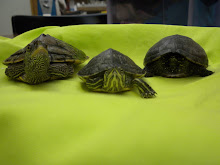Violet is worried about her first day in a new school - will she make friends? Of course she does, and the day is ending just fine until her father comes to pick her up. Her father is blue, and she is - well, violet. A classmate asks her why they are different colors, and she doesn't know how to answer. When she goes home and tearfully asks her mother (who is, of course, red), her mother gets out the paints to show her how colors can mix to make other colors.
That's pretty much it. Not a terribly subtle story, but not too heavy-handed, either. A nice choice for very young children who are just beginning to ask questions about race and skin color. Kids older than 5 or so will want something with a little more substance. Violet's mother tells her people should like her for who she is, but we don't learn who she is - just that she is violet. Since her skin color is the only identity she is given in the book, mom's admonition falls a bit flat.
Regional differences might also affect this book's reception. Where we live (southern New Mexico, with an Apache reservation on one side and an Air Force Base on the other), just about everyone has a rich, mixed ethnic heritage. Children here might wonder what the big deal is. On the other hand, our friend in northern Ohio, who teaches at a mostly-white, affluent school, recently discovered her children think American Indians all wear feathers in their hair.
Of course, this story lends itself to all sorts of activities with color mixing or elementary genetics, as well as serving as a good conversation starter. We give it a
3 out of 5.


No comments:
Post a Comment